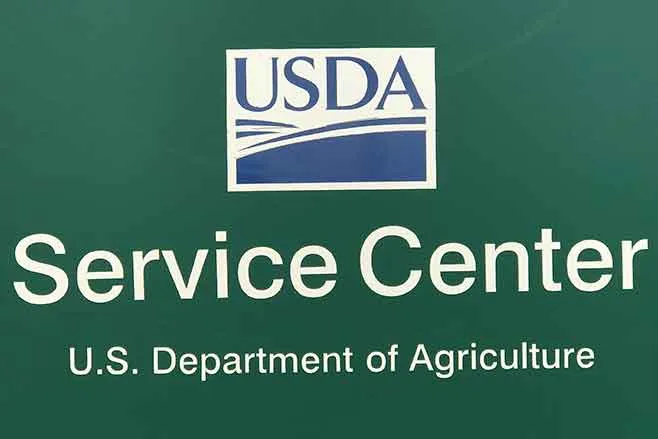
Controlling Volunteer Wheat to Control Wheat Streak Mosaic Virus
If you’re a wheat farmer, you’re hopefully feeling good about finishing harvest, yields being up, and prices being slightly higher! It has truly been a pretty good year in Kiowa County and with talks of a monsoon season, it will hopefully keep on being good. Of course if we do get some much needed moisture, it can pose some problems when it comes to controlling weeds and volunteer wheat in our wheat stubble.
As many of you are aware, Wheat Streak Mosaic Virus (WSMV), along with some Barley Yellow Dwarf, infected several areas within the county this year. Most of the infestation was due to lack of control of volunteer wheat. WSMV is carried to wheat plants by the wheat curl mite. Typically, the source of both mites and virus is volunteer wheat. The most severe mosaic is found where volunteer wheat provides a “green bridge” through the summer between successive wheat crops. The worst scenario is when wheat gets hailed just before maturity which we had some this year. This leads to an early crop of volunteer and mites move onto it readily from the old crop.
A cool, wet summer allows maximum survival of the volunteer wheat and the mites. Then a long, warm fall allows plenty of time for mites to move onto the newly seeded wheat and begin reproduction. A hot, dry spring is the final blow because infected plants have poor roots and are more susceptible to drought. The mites are carried by the wind and the next generation takes only 7 to 10 days to produce. They seem unaffected by cold winter temperatures and may even multiply during winter months. Their major weakness is their need for fresh plant material. In the absence of living leaves, the can only survive a few days.
Controlling volunteer wheat doesn’t only help control WSMV. It is also a host to Barley Yellow Dwarf Virus. Destroying volunteer helps reduce the reservoir for the BYD because aphids have to pick up the BYD virus from an infested hot plant first in order to become a carrier that can transmit the disease to wheat. Controlling volunteer wheat also controls Hessian fly and Russian Wheat Aphids that infest volunteer wheat during the summer and move onto planted wheat in the fall.
It is for all these reasons and more that all volunteer wheat should be completely killed within a half-mile of wheat fields and at least two weeks before planting. It may be killed by herbicides or cultivation and needs to be thorough since just a few plants can harbor a lot of mites. A second control is to avoid early planting. Early planting allows the mites plenty of time to move into the field, reproduce, and spread. Waiting until after the “fly-free” date is recommended.
If doing the right thing by controlling volunteer wheat isn’t enough of an incentive for both you and your neighbor, according to a Kansas study from 2013, the state loss due to WSMV would equal about 1.2% of the total harvest. That may not seem like a lot, but the 4.25 million bushel loss had an impact of $32.6 million. In areas that get hit hard, it can result in losses and damages of over $200 an acre. Farming is hard enough with everything mother-nature can give or take from farmers trying to make a living. Let’s do our best to mitigate some of the disasters that we do have some control over with good farming practices!

















